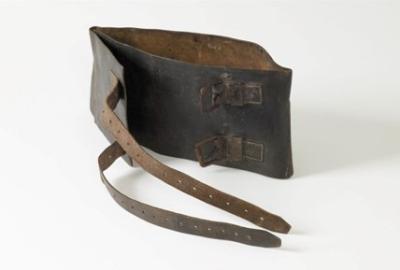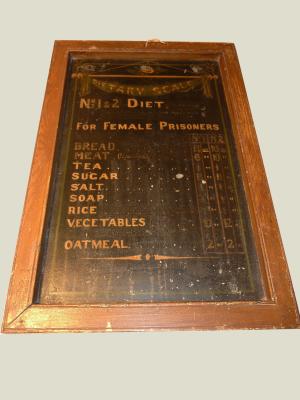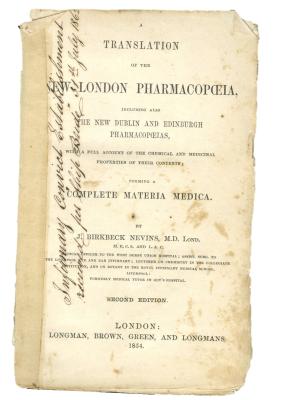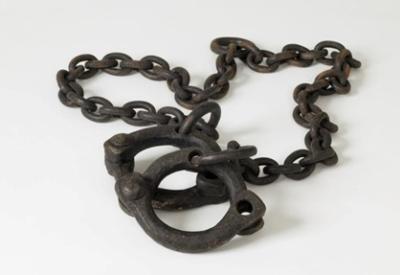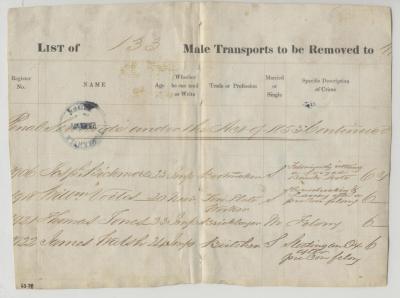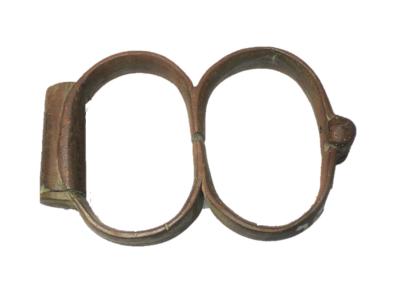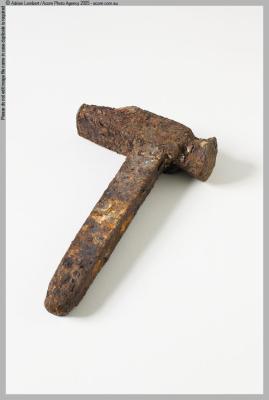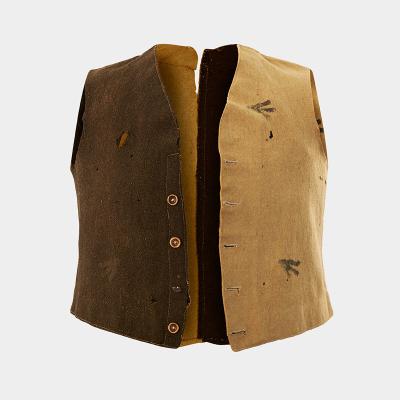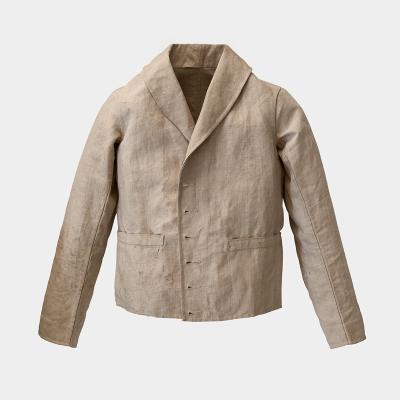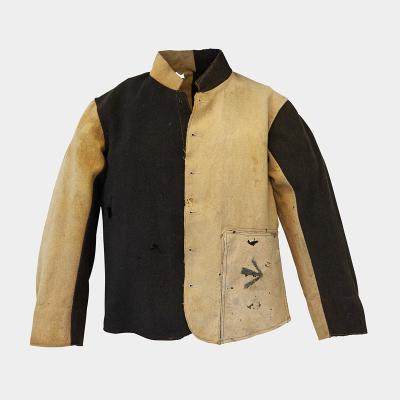BODY BELT
1850 - 1943Long, wide, black leather, padded belt. The leather belt is wide across the centre, and is padded with felt on the inside. One end of the belt has a strap with seven buckle-holes, and the other end holds the corresponding buckle. The buckle is nickel-plated, with a single keeper to thread extra belt length through.
It has been hypothesised that belts like this were used to restrain prisoners or protect their vital organs during flogging. This belt shows signs of use, though the felt is in excellent condition, which does not lend itself to the idea of use during corporal punishment. Instead, this belt may have been used to provide back support for convicts or prisoners while they were undertaking heavy manual labour.
Details
Details
In the early days of the Convict Establishment it was not uncommon for convicts to be sentenced to forms of corporal punishment for breaches of discipline. A certain number of lashes could be imposed as part of a convict’s initial conviction sentence, or for misbehaviour conducted whilst inside prison, such as insubordination. The most serious offence was attempting to, or successfully, escaping from legal custody.
A prisoner who had been sentenced to flogging was secured to the flogging triangle, with their legs tied to the base of the frame and their hands to the top. Their back was stripped bare and a protective leather belt was fastened around their waist, whilst a second could be strapped around the convict’s neck. The belts were in place to prevent serious internal injury, or even death, to the convict during their punishment. Continual flogging caused the skin to break and open, and without the belt on the back this could cause serious bruising or bleeding to the kidneys and other internal organs. Meanwhile the neck strap was in place to protect the main arteries in the neck from being cut open.
Depending on the sentence, a convict could be flogged up to 100 times. A medical officer was always present at every flogging and could intervene and cease the punishment if he felt the prisoner’s life was in danger. If a flogging was stopped prematurely for such a reason, the remaining lashes would be administered after the prisoner had sufficiently recovered.
The last flogging was administered at Fremantle Prison at 9 am on 21 June 1943 when a prisoner convicted of rape received 25 lashes as part of his sentence. The medical officer suspended the punishment after 17 strokes.
Corporal punishment and hard labour were then officially abolished in Western Australia under the Criminal Law Amendment Act (No. 2) 1992, effective from 6 January 1993.
Protective belts such as these were also used at the Convict Establishment as a remedy against injury for convicts undertaking hard physical labour as part of their punishment. One such example would be to strap the thick leather belt around the convict’s upper waist, to help support their back from strain while they were undertaking heavy manual labour, such as carrying or hauling rocks.
Corporal punishment and hard labour were two forms of punishment inflicted at the Convict Establishment, both of which are often seen by today’s visitors as indicative of the harshness of incarceration during this era. As such, these objects have high social significance, not only as examples of this form of punishment, but as popular examples of the time and genre. These belts have strong provenance to Fremantle Prison, and their historical significance is high.
